Seven residential units overall, 56 acres of grounds in a conservation area.... oh, and a specialised poker playing area. At Beach House, everything is possible.
The idyllic rural hamlet of Beach, south Gloucestershire, lies on the slopes of Lansdown Hill, scene of the brutal Battle of Lansdown during the first English Civil War and now a peaceful hidden enclave within the Cotswold National Landscape, roughly halfway between Bath and Bristol. Thought to take its name from an ancient beech tree that once stood amid springs close to where occupying Romans built villas and cultivated vines, the picturesque settlement comprises a group of eight or more 17th- and 18th-century stone houses scattered informally within a typical Cotswold landscape of green fields, thick hedgerows, dry-stone walls and trees. Beach was designated a conservation area in October 1989, with the stated aim of protecting ‘the tranquil rural setting of the hamlet, the important tree groups, and the attractive buildings’.
The principal house of the hamlet is Grade II-listed Beach House in Beach Lane, which stands on high ground within 57 acres of gardens, pasture, farmland and paddocks, looking west across the lovely Golden Valley to the Welsh hills. Extended and renovated over the years, Beach House estate, with its impressive main house, which has been at the heart of local affairs since it was first built, is now for sale through James Crawford of Knight Frank, who quotes a guide price of £13.95 million.
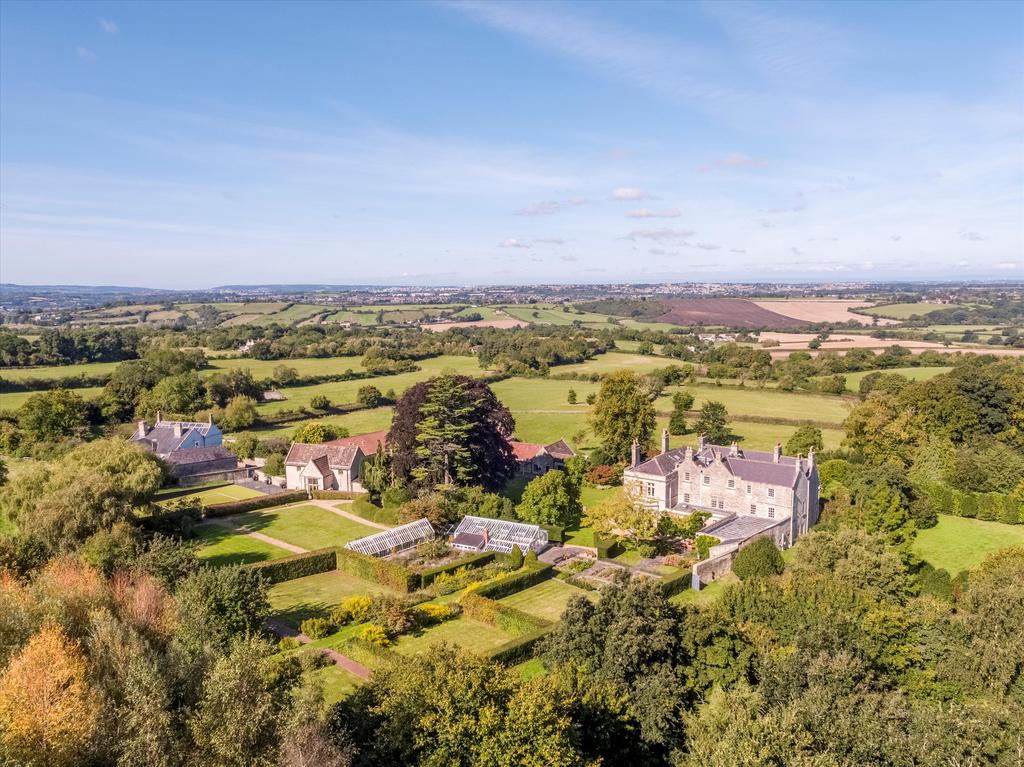
The conservation area of Beach in Gloucestershire.
Research supplied by the owners reveals that the first mention of the property comes in a notice in the Bath Chronicle (June 12, 1777) announcing: ‘A Country house to be Let, immediately. Any genteel Family, inclined to keep a Country House, may be accommodated with Beech House, where the late Samuel Webb Esq, deceased, lived; with a flower and kitchen garden, an orchard, and small paddock of ground, for £20 per annum.’
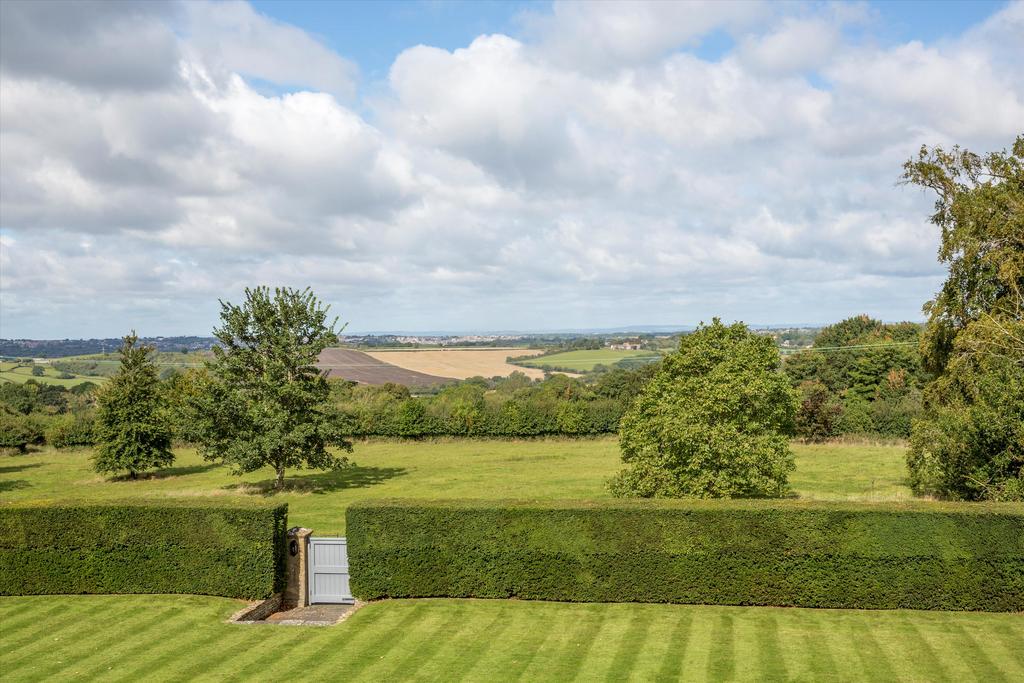
All this for £20 a year back in 1777.
In 1828, Beach House and its surrounding land were owned by William J. Parker and occupied, firstly by John Bush and later by his son, James, a brewer of independent means. Parker died in 1855, leaving his property in Beach to his son, Edward, and daughter, Eleanor Bush Peterson. By 1863, Beach House had a new owner, Samuel Evans, a draper and paper-maker, who, in 1881, lived with his family at nearby Beach Villa as builders worked on a Victorian ‘Grand Extension’ to the house. Following his death in 1885, his widow, Elizabeth, lived on at Beach House until at least 1906.
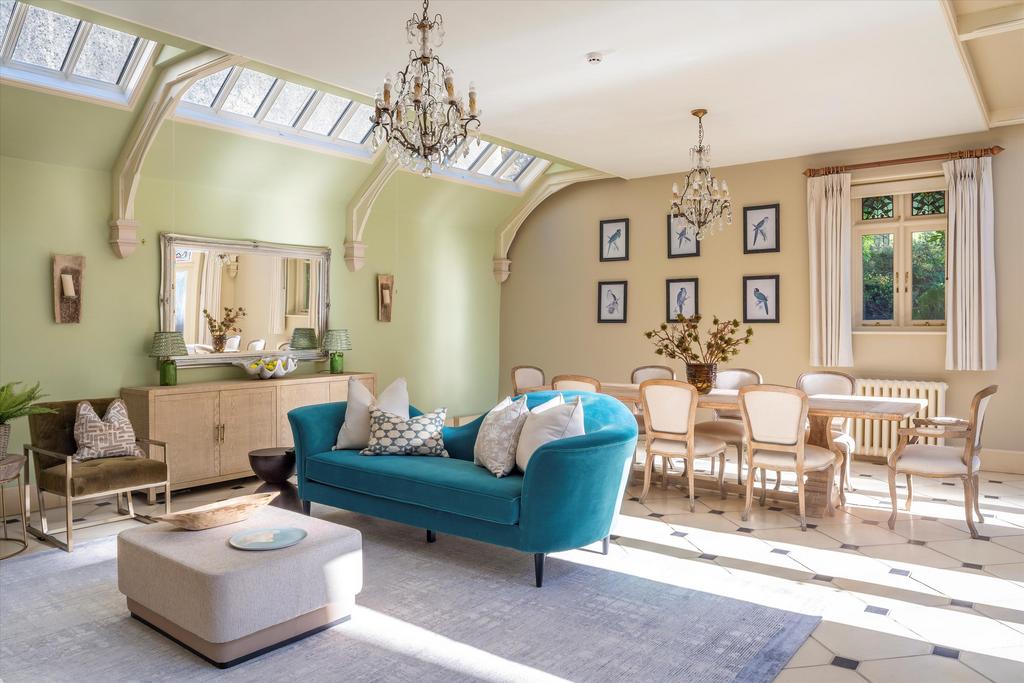
The elegant interiors have been tastefully refurbished.
In 1908, Beach House was acquired by Horace Walker, who had previously lived at Beach Villa. In 1915, he lent Beach House to the War Hospital Committee as a convalescent home for wounded servicemen. His wife, Winifred, was appointed Commandant, a role she executed with ‘untiring energy’ before resigning in 1919, after which she and her husband bought a house in Bristol.
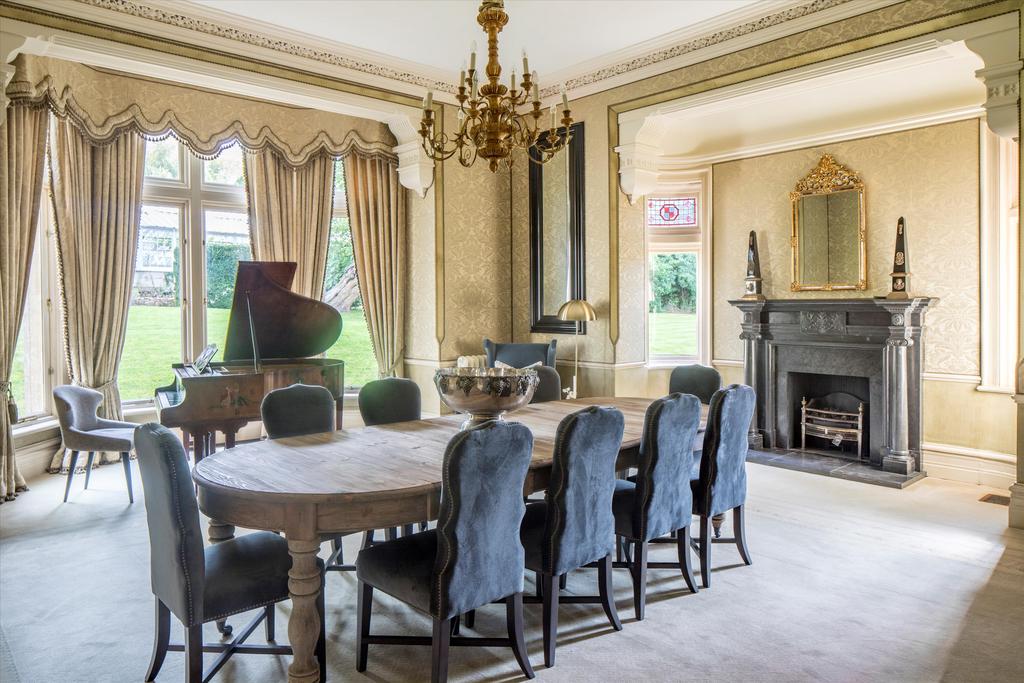
One of the dramatic reception rooms.
In March 1920, the Beach House estate was purchased by a committee formed by three large Bristol corporations — the Imperial Tobacco Company, chocolate manufacturer H. J. Packer & Co (of which Walker was chairman) and printer and paper manufacturer E. S. & A. Robinson. The plan was to equip the estate as a sanatorium for the use of company employees, a scheme that proved unviable, and, by July 1920, Beach House was back on the market with a resident caretaker.
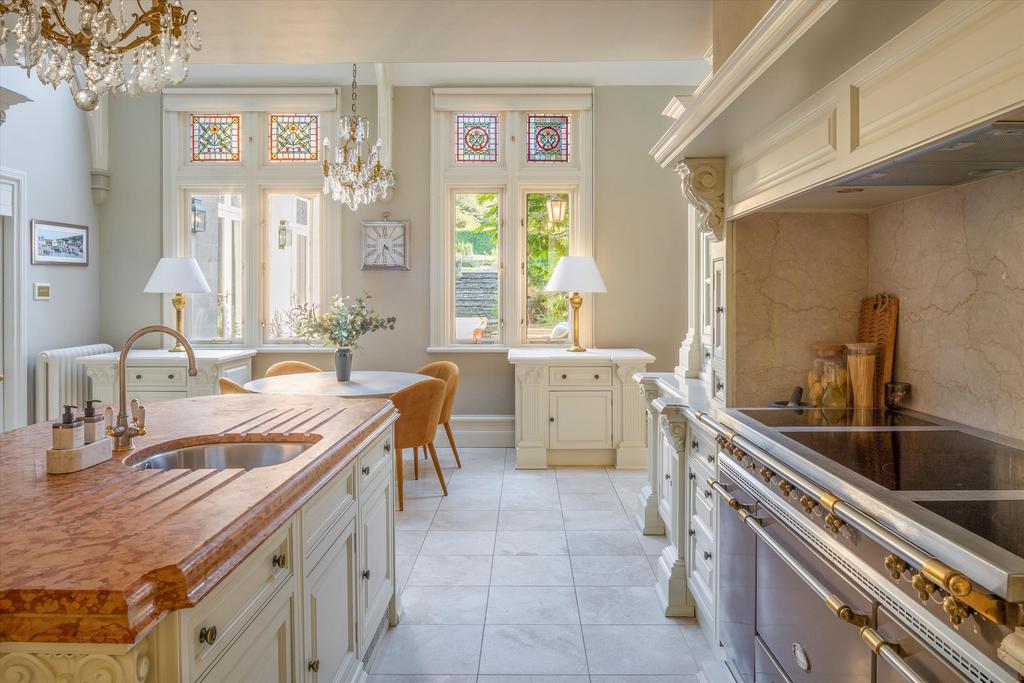
The Clive Christian kitchen.
Re-advertised in 1924 with an asking price of £10,000, it was described as ‘56 acres, 4 reception rooms, Billiard room, 12 Bed and Dressing rooms, electric light, Telephone, Central Heating, Villa, 3 cottages and Bailiff’s House’; it sold for £4,500 to Mrs Von Loesch in July 1925. By 1939, Beach House was home to retired Harrow School classics master, Edward Montagu Butler, who died in 1948. He was succeeded in the early 1950s by Hugh Rogers, a former High Sheriff of Avon and chairman of Imperial Tobacco, and his wife, Iris, who lived on at Beach House after her husband’s death in 1991, eventually putting it up for sale in 1999. The present owners bought the estate in September 2014.
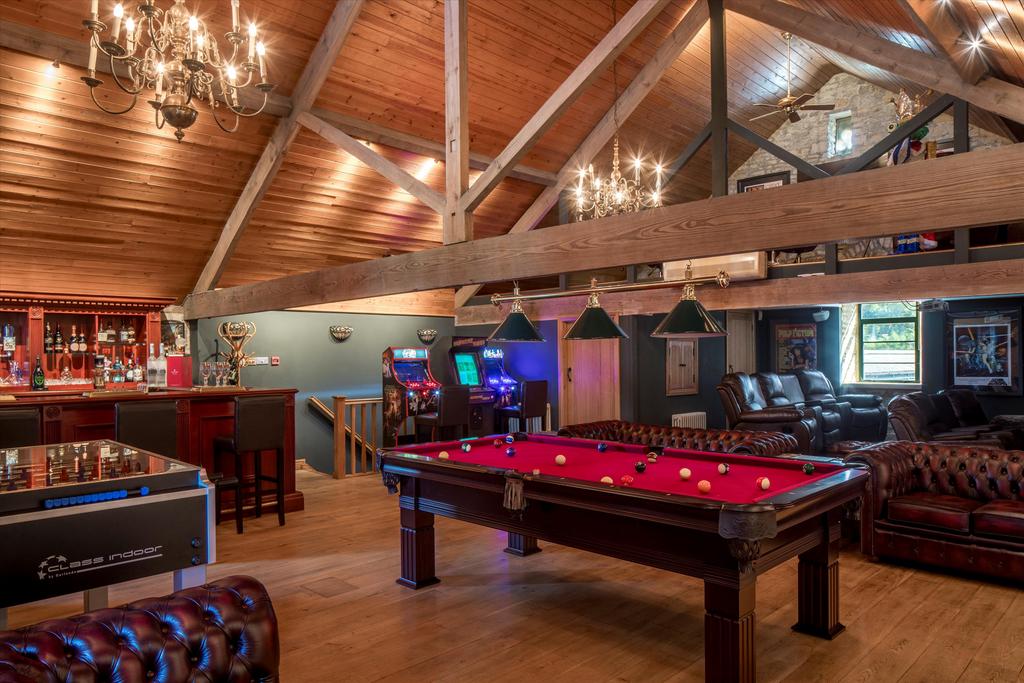
A seriously impressive games room.
During their tenure, Beach House has been extensively refurbished with the clear aim of retaining its historical and architectural integrity. The estate was already in good shape, but they rounded it off with the purchase of the neighbouring, Grade II-listed Beachcroft, a charming, five-bedroom, former dower house, which has undergone a sympathetic, five-year-long renovation. Four of the estate’s five cottages, all of which have been upgraded and previously let, are arranged around a neat traditional courtyard that provides ample storage and a stable block with four loose boxes, a tack room, gardener’s office, games room, bar, home cinema, kitchen and a mezzanine poker area.

The living room.
Beach House itself offers more than 10,500sq ft of elegant accommodation on three floors, including three fine reception rooms, an orangery, study, Clive Christian kitchen and domestic offices on the ground floor; master and guest suites, a library and two en-suite bedrooms on the first floor; and four sizeable en-suite bedrooms on the second floor, all of which enjoy splendid views either over the gardens or the surrounding countryside. The gardens extend up the hill to reveal flower beds, a kitchen garden, orchard and two substantial greenhouses; an artificial-grass tennis court is accessed through a wooden gate at the edge of the lawn.

A water-tower conversion on the north Devon coast with 360º views of the countryside
Buying a water tower and converting it into a home sounds like folly. Which is why you should buy one

760 acres of peace and quiet in the Scottish Borders, with only eagles, ospreys and falcons for company
Get lost in the scenery at Talla Farm.

11 outstanding homes for sale, as seen in Country Life
Our look at some of the best homes to hit the market via Country Life this week includes an irresistible

The ‘best of both worlds’ in a 16th century house with Georgian façade and sprawling grounds with lake and stables
All houses change a little over their lifetimes — and some end up unrecognisable as the centuries pass. Penny Churchill takes





